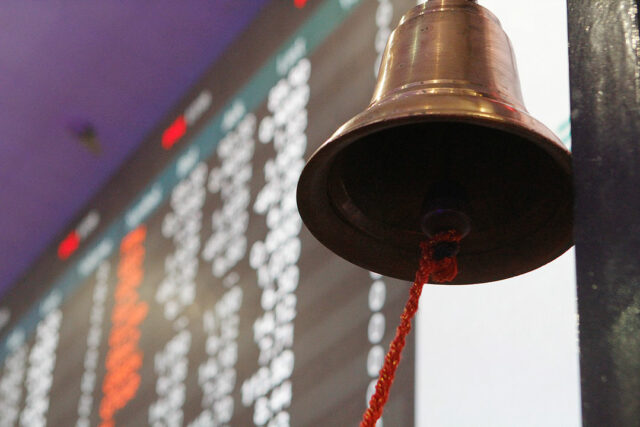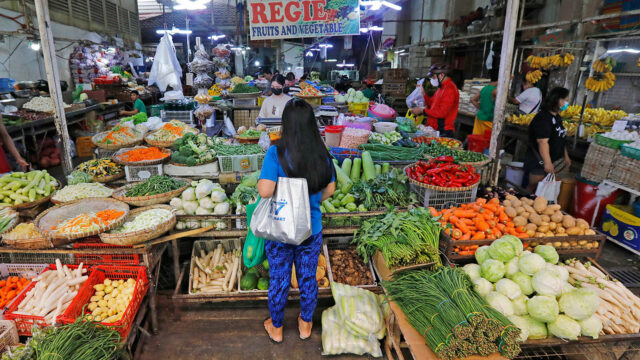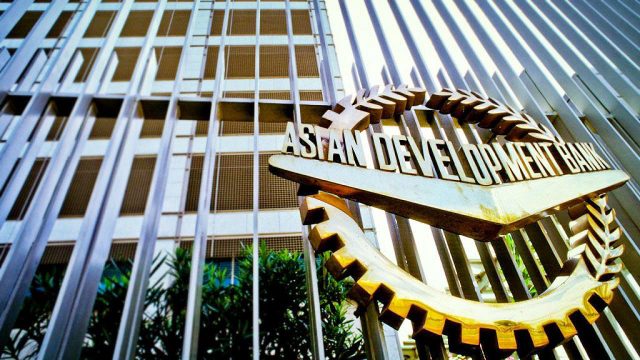Manila inches up in costliest city list for expats
The country’s capital inched up two notches to 131st out of 226 cities in the 2024 Cost of Living City Ranking by global consulting firm Mercer. Based on the rankings, the cost of living in Manila became relatively more expensive for international assignees.
Travel expo aims to boost VisMin tourism
Cagayan de Oro City, dubbed as the ‘city of golden friendships’ because of its local hospitality, will host the Philippine Travel Agencies Association’s (PTAA) first-ever travel event in the Visayas and Mindanao (VisMin) region.
The TravelTour Expo (TTE) 2024, launched by the PTAA, aims to highlight the region’s beauty and travel destinations.
The three-day travel event is set from July 19 to July 21 at the LimketKai Atrium in Cagayan de Oro City, the PTAA said.
“We believe this vibrant and welcoming city will bring us good fortune and foster business relationships. Let’s champion this event highlighting the beauty and diversity of the Philippines.” PTAA President, Evangeline Tankiang-Manotok said in her opening statement.
The agency aspires to make the Mindanao region the ‘pioneering destination’ in the Philippines, among other famous destinations in the country.
“Mindanao is so colorful, and I believe Cagayan has so much potential,” Ms. Tankiang-Manotok added.
PTAA also wants to empower the local travel agencies in the region by getting more market and potential clients in the upcoming travel event.
“Instead of this local agency dealing with another private agency in Manila to get their HongKong packages… Eurpoean packages, we could bring ourselves to them,” PTAA’s relations officer Jaison Yang explained.
The TTE 2024 will be a one-stop platform for travel enthusiasts to explore travel opportunities with over 50 exhibitors, including airlines, hotels, resorts, local travel agencies, and tourism boards, as they showcase their travel offers through exhibits and booths.
The expo is expected to gain 20,000-to-40,000-foot traffic across the 132 booths in the trade travel event, reflecting the growing interest in travel in the Philippines.
With high hopes for the CDO event’s success, PTAA plans that the TTE’s next venue will be at Iloilo (Visayas) in 2025. – Edg Adrian A. Eva
Stocks extend climb before BSP policy decision
THE MAIN INDEX rallied for a third straight session on Wednesday, climbing to the 6,300 level, as investors continued to buy bargains ahead of the Philippine central bank’s policy meeting on Thursday.
The Philippine Stock Exchange index (PSEi) rose by 0.22% or 14.06 points to close at 6,313.11 on Wednesday, while the broader all shares index went up by 0.27% or 9.49 points to end at 3,450.58.
“The local bourse continued with its climb this Wednesday. The market moved sideways for Wednesday’s session wherein bargain hunting prevailed leading to a positive close,” Philstocks Financial, Inc. Research and Engagement Officer Mikhail Philippe Q. Plopenio said in a Viber message. “However, many are still cautious ahead of the Bangko Sentral ng Pilipinas’ (BSP) policy meeting.”
A BusinessWorld poll last week showed all 15 analysts surveyed expect the BSP’s Monetary Board to keep its target reverse repurchase rate at a 17-year high of 6.5% for a sixth straight meeting on Thursday.
“Local shares closed slightly above the 6,300 level as bargain hunting continued before the semester’s end,” Regina Capital Development Corp. Head of Sales Luis A. Limlingan said in a Viber message.
“This followed the mixed performance of US equities, which were influenced by a 7% jump in Nvidia Corp.,” he added.
The Nasdaq rallied 1.3% on Tuesday, buoyed by strength in Nvidia and other tech mega-caps, while the Dow slipped as retailers weighed and investors waited for crucial inflation data due out this week, Reuters reported.
The Dow Jones Industrial Average fell 299.05 points or 0.76% to 39,112.16; the S&P 500 gained 21.43 points or 0.39% to 5,469.30; and the Nasdaq Composite gained 220.84 points or 1.26% to 17,717.65.
Asian stocks stuttered in choppy trade on Wednesday. MSCI’s broadest index of Asia-Pacific shares outside Japan struggled for direction and was flat at 566.53, not far from the two-year high of 573.38 it hit last week.
At home, majority of sectoral indices closed higher. Services rose by 0.86% or 16.94 points to 1,978.14; industrials climbed by 0.62% or 55.45 points to 8,882.48; property went up by 0.22% or 5.48 points to 2,482.01; and financials increased by 0.15% or 2.90 points to 1,887.38.
Meanwhile, holding firms dropped by 0.64% or 35.37 points to 5,471.63, and mining and oil went down by 0.12% or 10.33 points to 8,534.86.
“Among the index members, Aboitiz Equity Ventures, Inc. was at the top, rising 3.74% to P38.80. Bloomberry Resorts Corp. lost the most, dropping 5.39% to P9.30,” Mr. Plopenio said.
Value turnover rose to P4.96 billion on Wednesday with 323.63 million shares changing hands from the P4.19 billion with 360.42 million issues traded on Tuesday.
Decliners beat advancers, 90 versus 85, while 69 names closed unchanged.
Net foreign buying rose to P84.58 million on Wednesday from P28.94 million on Tuesday. — R.M.D. Ochave with Reuters
Peso sinks to new 20-month low as hawkish Fed bolsters dollar
THE PESO sank to a new 20-month low on Wednesday as the dollar strengthened following hawkish comments from US Federal Reserve officials.
The local unit closed at P58.86 per dollar on Wednesday, weakening by nine centavos from its P58.77 finish on Tuesday, Bankers Association of the Philippines data showed.
This was the peso’s worst finish since its P58.87-a-dollar close on Oct. 24, 2022.
Year to date, the peso is now down by P3.49 from its end-2023 finish of P55.37 against the greenback.
The peso opened Wednesday’s session weaker at P58.82 per dollar. Its worst showing was at P58.88, while its intraday best was at P58.77 versus the greenback.
Dollars traded went down to $720.25 million on Wednesday from $814.1 million on Tuesday.
“The peso weakened against the dollar because of hawkish comments from the Fed,” a trader said by phone.
The dollar was stronger on Wednesday despite mixed US data, Rizal Commercial Banking Corp. Chief Economist Michael L. Ricafort said in a Viber message.
The US dollar rose on Tuesday, bolstered by hawkish comments from Federal Reserve officials as well as data showing a stable housing market in the world’s largest economy, both suggesting that the central bank will not be in a rush to kickstart its rate-cutting cycle, Reuters reported.
Against a basket of currencies, the dollar index was up 0.1% at 105.72.
The greenback firmed against the euro, yen, Swiss franc, and commodity currencies, such as the Australian and New Zealand dollars.
Fed Governor Michelle Bowman started the ball rolling for the dollar, repeating her view on Tuesday that holding the policy rate steady “for some time” will likely be enough to bring inflation under control. She also reiterated her willingness to raise borrowing costs if needed.
Fed Governor Lisa Cook, for her part, said it would be appropriate to cut interest rates “at some point” given significant progress on inflation and a gradual cooling of the labor market. She remained vague, however, about the timing of the easing.
US data was mixed on Tuesday, still allowing the dollar to hold its gains.
A report showed US single-family home prices increased at a steady pace in April, rising 0.2% on the month after being unchanged in March. In the 12 months through April house prices increased 6.3% after advancing 6.7% in March. That pushed the dollar a little higher.
US consumer confidence, however, slightly eased in June, with the index at 100.4 from a downwardly revised 101.3 in May, according to the Conference Board. The June number, however, was marginally higher than the market forecast of 100. The report didn’t really hurt the dollar.
Investors are now looking to Friday’s release of the US personal consumption expenditures price index — the Fed’s preferred measure of inflation.
For Thursday, the trader said the key driver would be the Bangko Sentral ng Pilipinas’ policy review.
The trader sees the peso ranging from P58.60 to P58.90 per dollar on Thursday, while Mr. Ricafort expects it to move between P58.70 and P58.90. — AMCS with Reuters
DBCC growth target cut should be in play, ex-Finance secretary says
THE Development Budget Coordination Committee (DBCC) should consider cutting its growth targets as inflation and the weaker peso could curb the economy’s expansion, a former Finance secretary said.
“There may be a need to revise the economic growth projection for 2024 downwards within 5.8% to 6.3% due to inflation and the depreciation of the peso,” former Finance Secretary Margarito B. Teves told BusinessWorld via Viber.
In April, economic managers lowered their gross domestic product (GDP) growth target for 2024 to 6-7% from 6.5-7.5% previously.
For 2025, the DBCC expects GDP growth to average 6.5-7.5%, with the range widening to 6.5-8% beyond that, until 2028.
The committee is due to update its fiscal targets on Thursday.
Inflation, which is near the top end of the central bank’s 2-4% target for this year, is expected to curb spending and weaken growth in the coming months, Mr. Teves said.
“While average inflation for 2024 remains within the Bangko Sentral ng Pilipinas’ (BSP) target range of 2-4%, it has been accelerating since the year started.”
Year to date, the consumer price index was up 3.5%, the Philippine Statistics Authority reported.
Headline inflation accelerated to 3.9% in May led by transport and utility costs. It was the fourth straight month of stronger inflation readings.
“If this upward trend continues, we can expect consumption to further slowdown, which would dampen growth,” Mr. Teves said.
However, Bank of the Philippine Islands Lead Economist Emilio S. Neri, Jr. said the government should wait for second quarter GDP growth data before considering new targets.
“It’s too early to say we will miss the growth target with only one quarter of data. Many of our leading indicators point to more than 6% growth for the second quarter of 2024 so maybe economic managers can wait before they revise,” he said via Viber.
The economy fell short of the government’s growth target in the first quarter, expanding by only 5.7%.
Addressing supply side pressures to inflation though private sector investment in agricultural inputs, technology, warehouses, cold storage facilities, and processing plants will help make up for the limited fiscal space, Mr. Teves said.
“Lower inflation would boost consumption which would increase government revenue from consumption-based taxes such as VAT (value-added tax),” he noted. “Moreover, lower inflation would also reduce the risk of more interest rate increases which can dampen economic growth.”
The Monetary Board is expected to maintain its key policy rate at a 17-year high of 6.5% on Thursday amid sticky inflation.
Cooler inflation would boost consumer confidence, which has been dampened by two straight years of soaring prices, Mr. Neri said. Consumption accounts for a quarter of GDP growth.
The weaker peso may also dampen growth in the Philippines due to its heavy dependence on imports, Mr. Teves said.
“The weakening of the peso puts an upward pressure on prices, and thus also dampens growth,” Mr. Teves said.
On the other hand, Mr. Neri said the weaker peso would boost incomes of exporters, overseas Filipino worker families, and the business process outsourcing sector. — Beatriz Marie D. Cruz
P12B in excess rice tariffs eyed for farmer financial assistance program
THE Department of Agriculture (DA) said it plans to tap P12 billion in excess rice import tariff collections to provide financial assistance to farmers.
Agriculture Secretary Francisco P. Tiu Laurel, Jr. said the funds he is considering are tariffs left over after the legally mandated P10 billion a year is set aside for the Rice Competitiveness Enhancement Fund (RCEF).
“This year we plan to give P12 billion; and then the balance we will be diverting to crop diversification,” Mr. Laurel told reporters.
Under the Rice Tariffication Law of 2019 (Republic Act 11203), the Rice Farmers Financial Assistance (RFFA) program is the designated recipient for tariffs that exceed the RCEF funding requirement.
The RFFA program pays out P5,000 per farmer.
Eligible farmers are those tilling two hectares or less. The payout is being billed as compensation for the projected reduction in income arising from the liberalization of rice imports.
Mr. Laurel added that he is looking at distributing the financial assistance to the 2.4 million rice farmers by September.
“Last year kasi December na lumabas (the funds were released in December) … I’m targeting September for the P12 billion,” he said.
In 2023, rice tariff collections amounted to about P30 billion, according to the Bureau of Customs.
Legislators are seeking an extension to the RCEF’s term beyond the initial six years, while also expanding its allocation from tariffs.
Under the proposed amendments from the House of Representatives, 53% of the expanded, extended RCEF will go to mechanization, 28% to rice seed, and the rest to farm credit and extension services.
Mr. Laurel added that P7 billion of the P8 billion in tariffs left over after the RFFA allocation will go to the crop diversification effort, while P1 billion will support land titling by the Department of Agrarian Reform.
The US Department of Agriculture has estimated that rice imports this year of 4.6 million metric tons (MT) after the government approved the reduced tariff of 15% on imported rice, as authorized by Executive Order No. 62.
Mr. Laurel said the DA is only projecting rice imports of about 3.9 million MT. — Adrian H. Halili
PHL rubber producers pushed to raise raw material sales to Yokohama Tire
THE Department of Trade and Industry (DTI) said it the rubber industry could end up generating P1 billion in revenue if it can supply 100% of Yokohama Tire Philippines, Inc.’s raw material requirements.
Trade Secretary Alfredo E. Pascual told reporters at a recent briefing that the Japanese parent company, Yokohama Rubber Co., is planning to expand its Philippine footprint with an additional investment in its Clark facility.
“When we talked to Yokohama Rubber, they said that they are planning to invest close to $60 million to increase their capacity for tire production. They already have a big capacity, and they plan to increase it further,” Mr. Pascual said.
“The sad part is that the raw materials are not fully provided by local suppliers. That is why we committed to helping Yokohama source the rubber in Mindanao so they can add local content to the tires being produced in the Philippines,” he added.
According to Mr. Pascual, Yokohama plans to expand tire production by 5%, equivalent to an additional 500,000 units, to its current annual capacity of 10 million.
“We will help them source the rubber in the Bangsamoro Autonomous Region in Muslim Mindanao (BARMM),” he said.
“Of course, at a governmental level, we will talk to our colleagues in BARMM about how Yokohama could be supplied raw rubber sap,” he added.
He said that the Philippines is missing out on rubber supply contracts. Yokohama currently imports the rest of its rubber requirement from countries like Malaysia.
“The ideal target is to increase the share of local producers to 100%; we need to improve the share of local producers,” he said.
“Yokohama sources only 51% of its raw material, in the form of natural rubber, from domestic sources, which are mainly in Mindanao,” he said.
“They are the only tire manufacturer left in the Philippines; that is why we need to take care of them by doing our part,” he added.
He said the DTI could also help in addressing concerns about the availability of trained manpower.
“The value of sourcing is estimated at P1 billion, which will be additional revenue for the farmers in Mindanao. Right now, we only account for 12,000 metric tons, but our potential is 30,000 metric tons of raw rubber,” he added. — Justine Irish D. Tabile
Agri-fishery investments seen as hedge against China disruption
THE PHILIPPINES needs to ramp up investment in agriculture and fisheries to dampen the impact of heightened tensions with China, the National Economic and Development Authority (NEDA) said.
“We are linked with China economically through our supply chain directly (and) indirectly through the effects of any tensions in our region,” NEDA Secretary Arsenio M. Balisacan told reporters on the sidelines of a forum.
“One of the primary tasks of our government or administration is to improve our food security. And that’s not just fish, it’s also vegetables, fruit, rice, and all major commodities. That means that we really have to invest in the areas that will raise productivity,” he said.
When asked about the possibility of the Philippines reducing its import dependence on China for its supply of fish, Mr. Balisacan said: “it’s hard to say, because our population is also growing rapidly.”
Last week, a Navy sailor lost a thumb after his boat was rammed by Chinese personnel seeking to block Philippine access to an outpost in the West Philippine Sea, according to the military. The Chinese Coast Guard also disarmed and seized rifles from Philippine personnel.
During the forum, Mr. Balisacan said tensions with China are not the main factor behind weak foreign direct investment (FDI) inflows, citing a decline in FDI globally.
“The share of FDI from China is quite small. The high was 4.4% in 2015 to 2019. It fell to 0.9% in the last three years, but… I don’t think that we can directly attribute to that, because overall, global FDI (and) Asia-Pacific FDI have been falling,” Mr. Balisacan said.
Loans from China also remain small, with the Philippines seeking to expand its sources of funding, he added.
“Official development assistance (ODA) from China is also very small… it’s about only 5% of the total ODA we receive from other countries,” he said.
Last year, the government withdrew from loan negotiations with China for three major railway projects valued at around P228 billion as tensions worsened over the dispute over territorial waters.
“The area where we are most exposed to China is in trade,” Mr. Balisacan said. “Whether (we) like it or not, we are all linked to the same global supply chain.”
He said an easing in global trade restrictions would help boost the Philippines’ growth prospects.
“Our economic performance in recent years and the economic outlook in the near and medium term are very robust, keeping us one of the fastest-growing economies in the region. Still, if the global economy is better, if trade restrictions are reduced, then economic growth will be even faster,” he told reporters.
The government is aiming for 6-7% gross domestic product growth this year. — Beatriz Marie D. Cruz
NCR businesses see EoDB, power, traffic as major concerns
THE National Capital Region (NCR) chapter of the Philippine Chamber of Commerce and Industry (PCCI) said the main challengers to its members are ease of doing business (EoDB), power, and road congestion.
The issues were raised at a news conference on Wednesday launching the 2024 Metro Manila Business Conference (MMBC), which will take place on Aug. 21–22.
By the end of the MMBC, PCCI-NCR plans to present resolutions to the Metro Manila local government units (LGUs) that highlight their leading concerns, according to Hernando B. Delizo, PCCI-NCR vice-president and chairman of the 2024 MMBC.
According to Mr. Delizo, the most common issue cited by business owners in the region is ease of doing business, which they hope will improve through the efforts of the Anti-Red Tape Authority.
He added that taxes need to be harmonized between LGU and national levels.
He said power costs and road congestion result in high logistics costs, a major concern for businesses in the capital.
“This is why walkable cities are important. We are actually pushing for the pedestrianization of areas,” he said.
“Unfortunately, the previous administration looked more into motor vehicles. But if you look at Japan, Singapore, etc., their cities are walkable. That is something we need to do,” he added.
Mr. Delizo said he expects Metro Manila to remain the center for business, noting that it will take time to develop Clark as a new investment hub as part of a broader effort to organize the US-backed Luzon Economic Corridor.
“These developments will take time. Infrastructure development is challenging, especially with the rising cost of raw materials and manpower,” he said.
“Although we are in support of that, depopulating Metro Manila will not be easy… We actually welcome the Luzon Economic Corridor; however, I know that it will take time,” he added.
He said that Metro Manila retains many real estate assets that are not “maximally used.” — Justine Irish D. Tabile
Philippine bond market growth picks up in 1st quarter
THE bond market’s growth picked up in the first quarter of 2024 due to increased debt issues by the government and the Bangko Sentral ng Pilipinas (BSP).
Outstanding local currency (LCY) bonds grew 2.2% quarter on quarter to $219 billion, bringing total issues to about P12.3 trillion during the period. The growth rate had been 1% during the fourth quarter of 2023, according to the Asian Development Bank’s (ADB) Asia Bond Monitor report for March 2024.
The bond market’s growth was the fourth slowest among eight economies in Emerging East Asia which posted quarter-on-quarter expansions, though it exceeded the region’s 1.4% growth.
Vietnam’s bond market posted the strongest growth at 7.7%.
Year on year, the Philippine bond market grew 6.4%.
Treasury and other government bonds outstanding expanded 2.7% quarter on quarter to $180 billion in the first quarter, accelerating from the 2.1% expansion in the three months to December. These bonds had accounted for 82.5% of the total debt stock at the end of 2023.
Outstanding central bank securities grew 20.2% to $14 billion, accounting for 6.25.3% of the total.
Meanwhile, corporate bonds outstanding contracted by 8.2% to $25 billion due to a large number of maturities and the low volume of issuance during the quarter. These accounted for 11.3% of the Philippine LCY debt stock. — Aaron Michael C. Sy
Cold inspection facilities planned for Subic, Manila, Angat, and Davao or GenSan
THE Department of Agriculture said it plans to establish four cold examination facilities in agriculture (CEFA) this year for imported farm goods.
Agriculture Secretary Francisco P. Tiu Laurel, Jr. said: “This year we will build four. One in Subic, one in Manila Port, one in Angat… then the fourth in Davao or General Santos,” Mr. Tiu Laurel Jr. said at a forum late Tuesday.
The CEFAs are intended to ensure that produce imports are disease-free and to mitigate the risks from smuggled farm goods.
“The money is there, we have to obligate it. We have to do (it) in the next few months, hopely by September.” Mr. Laurel said.
He added that the Angat facility in Bulacan will be used as a laboratory, and for rendering and waste disposal.
“This is where we will burn problematic meat and smuggled goods,” he said.
The DA last year signed a memorandum of agreement with Pacific Roadlink Logistics, Inc. to build the facility.
All imported agri-fishery products are to undergo a 100% examination by the various food regulators overseeing animal industry, plant industry, fisheries and aquatic resources, and meat. — Adrian H. Halili















